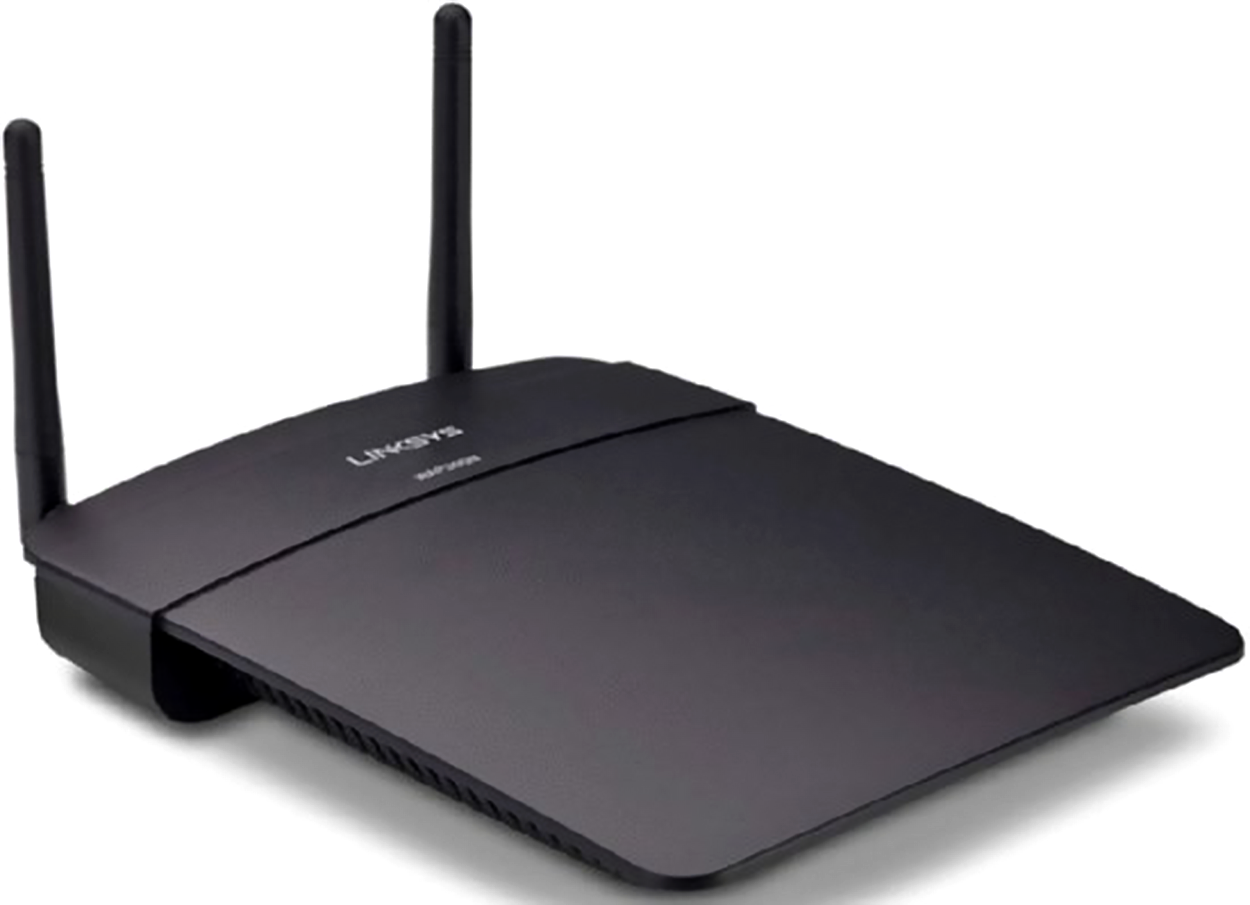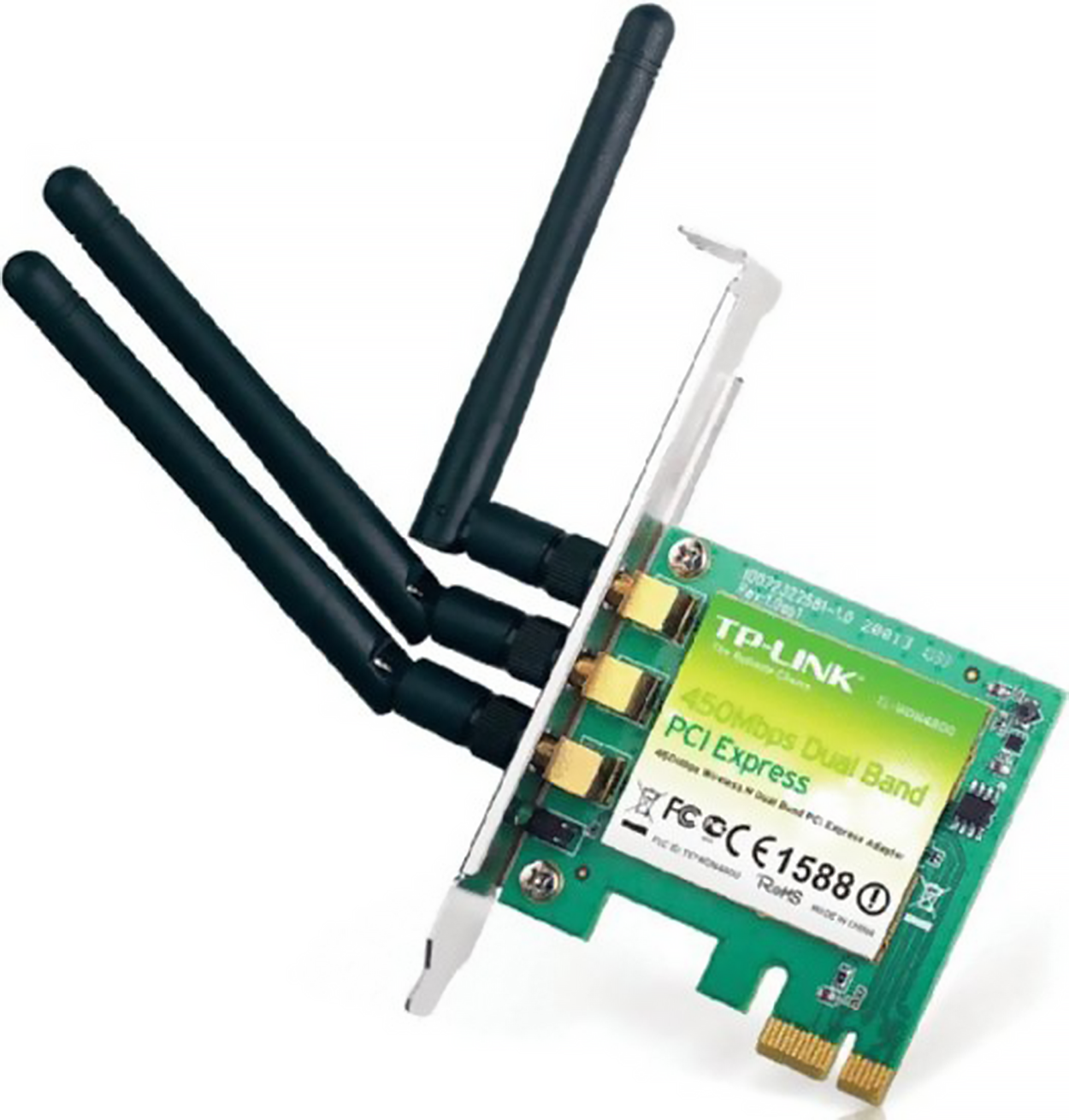Table of Contents |
You will find a central component, like a switch, in the vast majority of wired networks that serves to connect hosts together and enables them to communicate with each other. It’s the same idea with wireless networks. They also have a component that connects all wireless devices together, only that device is known as a wireless access point (WAP). WAPs have at least one antenna, often having two or more for better reception, and an Ethernet port to connect them to a wired network. APs that have multiple antennas support antenna diversity to improve the quality and reliability of a wireless link. The photograph below shows an example of a typical WAP.

You can even think of an AP as a bridge between the wireless clients and the wired network. In fact, an AP can be configured as a wireless bridge to connect two wired network segments.
In addition to the standalone AP, there is another type of AP that includes a built-in router that you can use to connect both wired and wireless clients to the internet. In summation, an AP can operate as a repeater, bridge (switch), or router, depending on its hardware and its implementation.
These devices are usually known as wireless routers. They are usually employed as network address translation (NAT) servers by using the one ISP-provided global IP address to multiplex numerous local IP addresses that are generally doled out to inside clients by the wireless router from a pool within the 192.168.x.x range.
Every host that wants to connect to a wireless network needs a wireless network interface card (NIC) to do so. Basically, a wireless NIC does the same job as a traditional NIC, but instead of having a socket to plug some cable into, the wireless NIC has a radio antenna. Wireless NICs, like other NICs, can differ in the type of connection they use to connect to the host computer.
The photograph below shows an example of a wireless NIC.

The wireless card shown above is used in a desktop PC. There are various options for laptops as well. All new laptops and smartphones have wireless cards built into the motherboard. These days, it is pretty rare to use an external wireless client card because all laptops come with them built in, and desktops can be ordered with them too. Typically, you would use cards like the one shown above for areas of poor reception because they can have a better range, depending on the antenna you use, or because you want to upgrade the built-in card to 802.11ac or 802.11ax.
Wireless antennas act as both transmitters and receivers. There are two broad classes of antennas on the market today: Omni or omnidirectional antenna (point to multipoint) and directional or Yagi antenna (point to point). Yagi antennas usually provide greater range than Omni antennas of equivalent gain because Yagis focus all their power in a single direction, whereas Omnis must disperse the same amount of power in all directions at the same time. A downside to using a directional antenna is that you must be much more precise when aligning communication points. This is why a Yagi is a good choice only for the point-to-point bridging of APs. It is also why most APs use Omnis because, often, clients and other APs could be located in any direction at any given moment.
Both antennas are also rated in units of decibel isotropic (dBi) or decibel dipole (dBd), based on the type of reference antenna—either an isotropic antenna or a dipole antenna—of equivalent frequency that was initially used to rate the production antenna. A positive value for either unit of measure represents a gain in signal strength with respect to the reference antenna. Merriam-Webster defines isotropic as “exhibiting properties (as velocity of light transmission) with the same values when measured along axes in all directions.”
EXAMPLE
We are going to use the Cisco Systems series of Aironet AP (indoor) and bridge (outdoor) antennas. The table below describes the effect that gain ratings and attempted bit rates have on range limitations. Notice the differences in range and Mbps between each model.| Model | Gain | Indoor Range at 1 Mbps | Indoor Range at 11 Mbps | Outdoor Range at 2 Mbps | Outdoor Range at 11 Mbps |
|---|---|---|---|---|---|
| AIR-ANT2410Y-R | 10 dBi | 800 ft | 230 ft | Not specified | Not specified |
| AIR-ANT1728 | 5.2 dBi | 487 ft | 142 ft | Not specified | Not specified |
| AIR-ANT4941 | 2.2 dBi | 350 ft | 130 ft | Not specified | Not specified |
| AIR-ANT2506 | 5.2 dBi | Not specified | Not specified | 5,000 ft | 1,580 ft |
| AIR-ANT24120 | 12 dBi | Not specified | Not specified | 24,288 ft | 7,392 ft |
It is pretty much a given that antennas operating with frequencies below 1 GHz are measured in dBd while those operating above 1 GHz are measured in dBi. But because this rule does not always work definitively, sometimes, we have to compare the strength of one antenna measured in dBd with another measured in a numerically equivalent dBi value in order to determine which one is stronger. This is exactly why it is important to know that a particular numerical magnitude of dBd is more powerful than the same numerical magnitude of dBi.
This sounds pretty complicated, but because the relationship between these two values is linear, it really makes the conversion a lot easier than you might think. Here is how it works: At the same operating frequency, a dipole antenna has about a 2.2 dB gain over a 0 dBi theoretical isotropic antenna, which means that you can easily convert from dBd to dBi by adding 2.2 to the dBd rating. Conversely, subtract 2.2 from the dBi rating and you get the equivalent dBd rating.
Armed with what you have learned about the difference between Omni and Yagi antennas and the difference between dBd and dBi gain ratings, you should be able to compare the relative range of transmission of one antenna with respect to another based on a combination of these characteristics.
EXAMPLE
The following four antenna ratings are given in relative order from greatest to least range:So, now that you understand the basic components involved in a wireless network, it is time to use what you learned about the standards we use in our everyday home and corporate wireless networks and the different ways that they’re actually installed.
Source: This content and supplemental material has been adapted from CompTIA Network+ Study Guide: Exam N10-007, 4th Edition. Source Lammle: CompTIA Network+ Study Guide: Exam N10-007, 4th Edition - Instructor Companion Site (wiley.com)